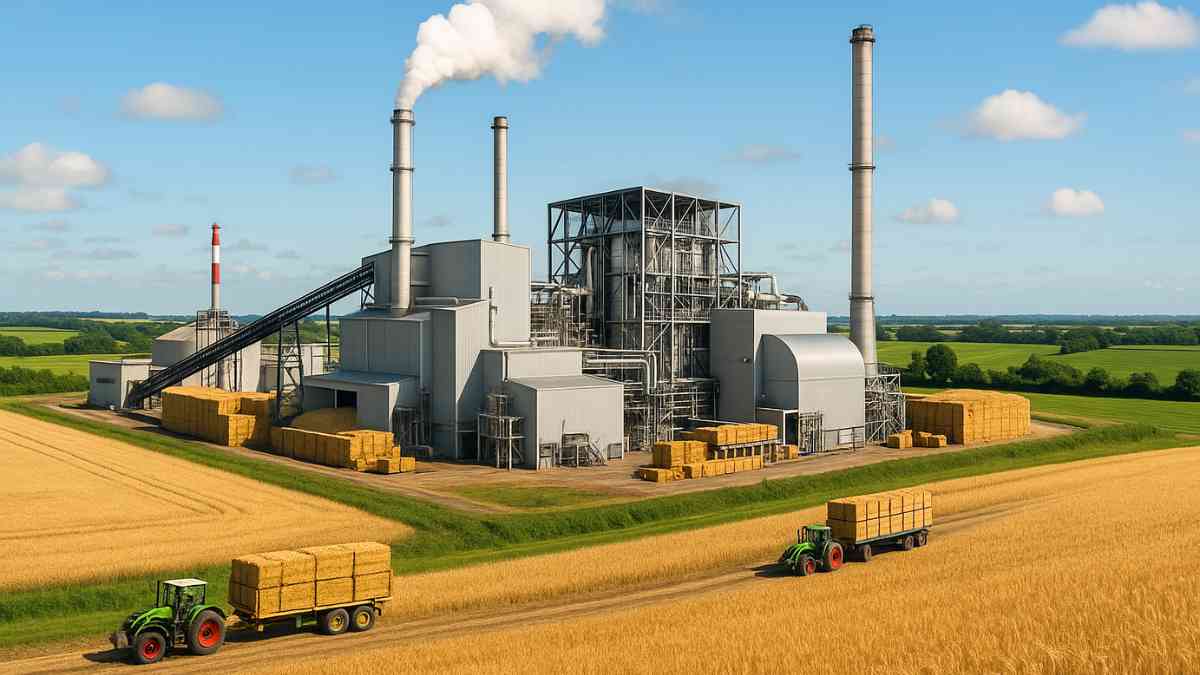Brigg Renewable Energy Plant: A Landmark in the UK’s Sustainable Future

The Brigg Renewable Energy Plant is one of the most remarkable examples of how the United Kingdom has been reshaping its energy sector to meet modern challenges. Situated in North Lincolnshire, this facility represents not only a significant investment in green energy but also a demonstration of how local resources can be transformed into large-scale, sustainable power. As the global push for carbon neutrality intensifies, projects like the Brigg Renewable Energy Plant provide insight into how communities, industries, and governments can come together to create cleaner, greener energy solutions.
The Birth of the Brigg Renewable Energy Plant
The location of Brigg has long been associated with agriculture and food production, as it was once home to a sugar factory. After the factory closed, developers saw the opportunity to repurpose the site into something that could not only serve the community but also address pressing environmental concerns. This vision led to the creation of a biomass-fuelled power station, later known as the Brigg Renewable Energy Plant.
The project was conceived in the early 2010s, with construction beginning soon after. By around 2016, the facility was operational, delivering electricity to tens of thousands of households in the UK. Its development was the result of collaboration between engineering firms, energy companies, and local stakeholders, ensuring that both economic and ecological goals were met.
Location and Significance
North Lincolnshire was an ideal location for such a plant. The region has a strong agricultural base, making it easier to source biomass material locally. Instead of relying heavily on imported fuels or long-distance supply chains, the Brigg Renewable Energy Plant harnesses straw collected from nearby farms, creating a circular economy that benefits both the agricultural sector and the energy industry.
The choice of location also reflects the UK’s broader strategy of decentralising energy production. Rather than concentrating renewable projects only in urban hubs, rural areas like Brigg are increasingly seen as valuable contributors to the national energy mix. This decentralisation helps build resilience, reduce transmission losses, and promote local employment.
Design and Engineering Excellence
The plant’s design is a fine example of modern engineering adapted to renewable purposes. Built on steel-framed modular structures, the facility includes a boiler hall, turbine hall, straw barns, and conveyor systems designed for efficient fuel handling.
At the heart of the operation is a water-cooled vibrating grate boiler, a technology that allows straw to be combusted effectively while minimising operational risks such as overheating or blockages. The high-pressure steam generated is directed into a turbine, which in turn produces electricity.
The plant has a generation capacity of 40 megawatts, a size that may seem modest compared to massive gas or nuclear plants, but it is sufficient to power more than 70,000 homes annually.
Fuel Supply: Turning Straw into Power
The defining feature of the Brigg Renewable Energy Plant is its reliance on straw. Each year, the plant consumes around 240,000 tonnes of straw, collected within a radius of about 50 miles. By sourcing fuel locally, it supports farmers with an additional stream of income, while simultaneously reducing the carbon footprint associated with long-distance transport.
Straw is an agricultural by-product, often left unused or disposed of in ways that can contribute to emissions. By transforming this resource into electricity, the Brigg plant demonstrates how waste can be turned into value.
Additionally, the plant occasionally uses wood chips as auxiliary fuel, ensuring steady operations even when straw supplies fluctuate.
Environmental Impact
One of the biggest arguments in favour of biomass plants like Brigg is their environmental contribution. By replacing fossil fuels with renewable biomass, the plant saves up to 300,000 tonnes of carbon dioxide emissions annually. This is equivalent to taking tens of thousands of cars off the road.
Furthermore, the plant operates with an efficient emissions-cleaning system, ensuring that gases released into the atmosphere meet strict environmental standards. The ash produced from burning straw is recycled back into agriculture as fertiliser, further closing the loop of sustainability.
Unlike fossil fuel stations, the Brigg Renewable Energy Plant is considered carbon neutral, as the carbon released during combustion is balanced by the carbon absorbed by crops during their growth cycle.
Community and Economic Benefits
Beyond its environmental contributions, the Brigg plant plays a crucial role in supporting the local economy. Farmers gain a stable market for their straw, workers are employed in the plant’s daily operations, and local contractors benefit from ongoing maintenance and logistics.
The presence of such a plant also strengthens the sense of community pride. For many residents, it is a symbol of how a rural town can contribute to national and global sustainability efforts. Instead of being left behind by industrial change, Brigg has embraced innovation and turned it into opportunity.
Operational Efficiency and Maintenance
The plant operates continuously as a baseload generator, meaning it runs throughout the year rather than being used only during periods of high demand. This reliability is critical in balancing the national grid.
Each year, the plant undergoes a planned maintenance shutdown to ensure its machinery remains in peak condition. During this time, engineers carry out inspections, replace parts, and fine-tune systems. This commitment to maintenance not only prolongs the plant’s life but also guarantees consistent output for households and businesses.
The Bigger Picture: UK’s Renewable Strategy
The Brigg Renewable Energy Plant is not an isolated project but part of the UK’s broader renewable energy strategy. The nation has set ambitious targets to reduce greenhouse gas emissions and transition to net zero. Biomass plays a key role alongside wind, solar, hydro, and emerging technologies like tidal energy.
While onshore and offshore wind farms often receive the most attention, biomass projects such as Brigg are equally important because they provide stable, continuous power. Unlike solar and wind, which can fluctuate with weather conditions, biomass ensures there is always a reliable supply of electricity feeding into the grid.
Challenges and Criticism
Despite its many advantages, the Brigg Renewable Energy Plant has faced its share of challenges. One concern raised by critics is the sustainability of large-scale biomass use. While straw is renewable, questions have been asked about whether removing so much straw from fields could affect soil quality in the long term.
Another challenge relates to the costs of construction and operation. Biomass plants require significant investment upfront, and while the long-term benefits outweigh the costs, they can still be seen as less economical compared to some other forms of renewable energy.
Finally, ensuring consistent supply chains during poor harvest years is another logistical difficulty. Farmers and plant operators need to work closely to ensure that supply contracts remain reliable.
A Model for Future Projects
Despite these challenges, the Brigg Renewable Energy Plant remains a model for future projects. It demonstrates that renewable energy is not just about wind turbines or solar panels but also about smart use of agricultural resources.
The project highlights how collaboration between local farmers, engineering firms, and renewable energy companies can deliver large-scale benefits. Other regions in the UK, and indeed in Europe, have looked to Brigg as an example of how to replicate similar projects tailored to their local resources.
Conclusion
The Brigg Renewable Energy Plant is far more than just a power station. It is a testament to innovation, community partnership, and environmental responsibility. By turning agricultural waste into clean electricity, it provides power for over 70,000 homes, reduces carbon emissions, supports local farmers, and strengthens the national grid.
As the UK continues its journey toward a net-zero future, plants like Brigg will remain at the forefront of change. They remind us that sustainability is not an abstract concept but something that can be built, operated, and lived with on a daily basis.



